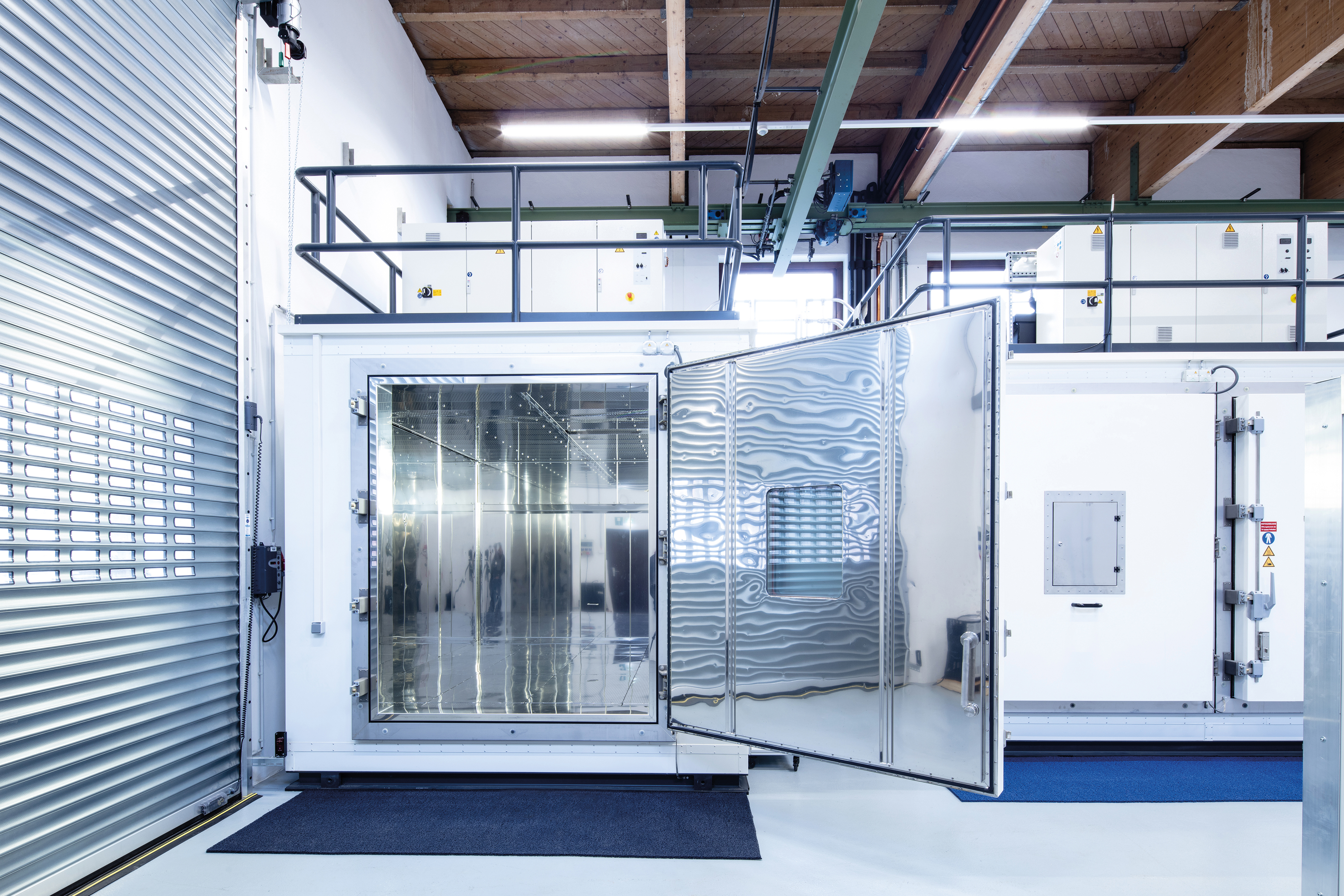Fraunhofer WKI expands capacities for emission testing
The Fraunhofer Institute for Wood Research, Wilhelm-Klauditz-Institut WKI, is setting standards: Through the addition of a newly opened hall with ten specially developed large test chambers, the institute has significantly expanded its capacities for the emission testing of complete products, thereby becoming a worldwide unique service location. In these test chambers, the scientists measure the emissions from objects such as furniture or electronic devices as well as from building materials in indoor areas.
In order for manufacturers to be certain that their products comply with the requirements stipulated by customers and quality labels as well as statutorily prescribed values, they are able to have these products tested for emissions at the Fraunhofer WKI. The spectrum of investigations is broad: The release of trace gases, of organic volatile substances (VVOC such as formaldehyde, VOC, SVOC), of fine or ultrafine particles and of odors can be measured, as can the behavior of product emissions with regard to reactive gases or high temperatures. The new test chambers, which range between 4 m³ and 30 m³ in size, enable the examination of complete products such as electrical appliances, furniture items or even entire sections of buildings. Whether a customer buys a sofa, an air-purifier or a new wall paint - all objects and building materials influence the indoor air quality through their emissions.
“In order for an item of furniture, a technical device or a car to provide the customer with pleasure and not with headaches, we prepare a detailed analysis for the manufacturer. Air samples from the test chamber are thereby analyzed using mass spectrometers. We can detect hundreds of substances within a sample and, thanks to a collection of several thousand reference substances, can quantify them precisely. This enables us to provide industrial customers with important feedback on their products, for which we can also offer customized, functionally appropriate tests,” explains Erik Uhde, Deputy Head of the department.
The test chambers allow investigations at up to 100 degrees Celsius. The simulation of the interior of a vehicle parked in the sun is thereby possible, to name but one example. With a size of 30 m³ and 48 m³ respectively, the largest test chambers can contain the furniture items of an entire room. The scientists can therefore simulate, for example, the emissions from living room fixtures and furnishings or a kitchen.
“With our analyses, we enable manufacturers to learn more about their products and to optimize the emissions and odor characteristics at an early stage of development; in this way, subsequent complaints from customers can be avoided. With our activities, we also contribute towards both the definition of meaningful limit values for harmful emissions in indoor areas and the testing of products concerning compliance with these limits. Further-reaching requirements of voluntary product labels can also be specified and complied with using our assistance. We are thereby contributing towards a long-term improvement in the quality of indoor air,” says Erik Uhde in summary.
Further information:
 Fraunhofer Materials
Fraunhofer Materials